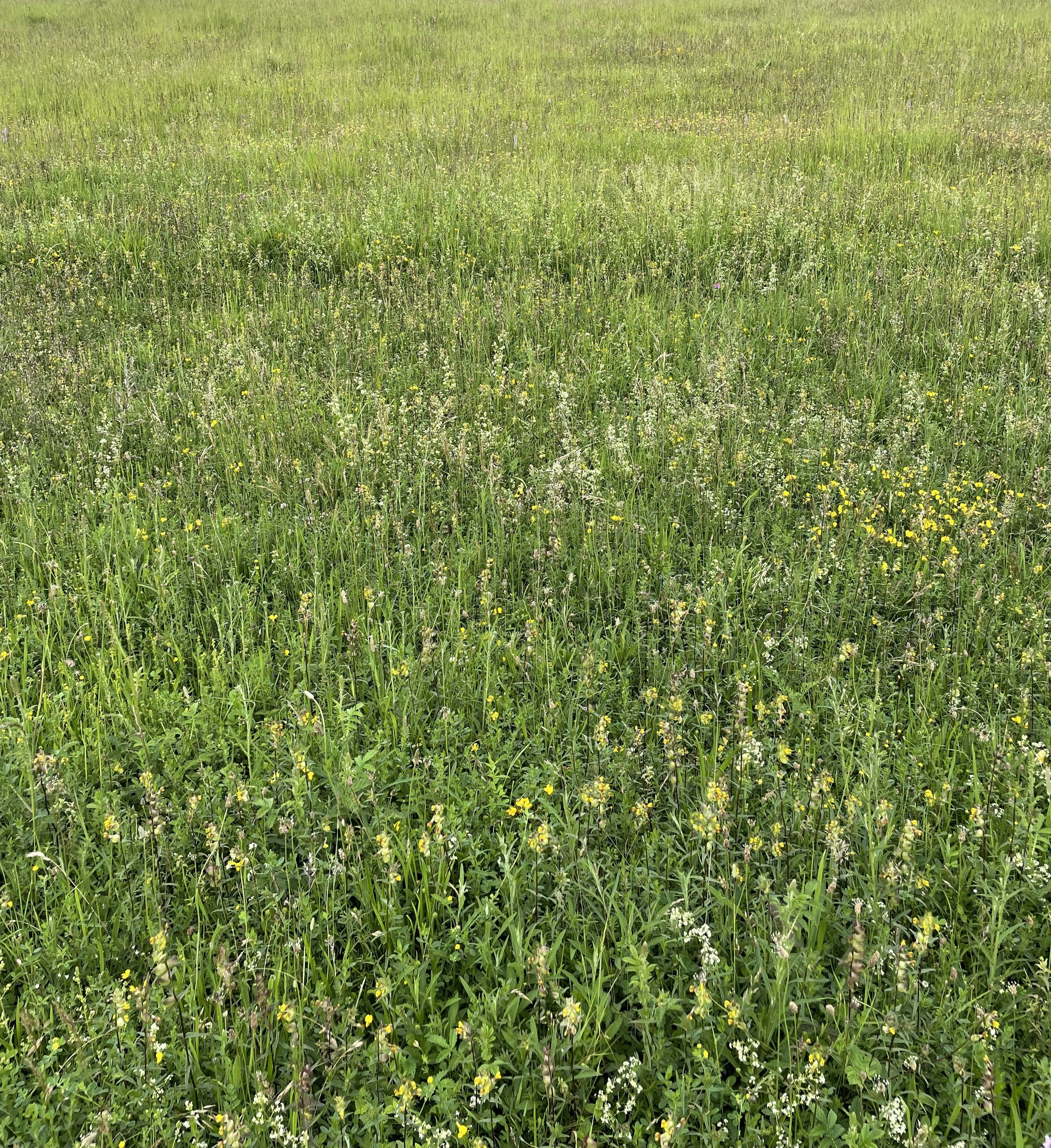
What we do
How we manage our fields. Our conservation strategy
Our aim is to manage the land in a way that will increase the biodiversity of plants, animals and fungi native to this area, particularly those of conservation concern. We have created five different habitat types within our fields: grassland, hedgerows, woodland, pond and scrub. Our key ones though are grassland and hedgerows, not just because they’re the largest but also, because they are what we consider the most important for nature recovery on the Downs. That said our woodland, pond and scrub make valuable additions and create a complementary mosaic of habitats. We believe that both diversity of habitats and diversity within habitats enhances biodiversity and resilience, which we consider vital in a world facing an increased likelihood of weather extremes resulting from climate change.
We manage the grassland through low intensity grazing with both cattle and sheep and physically remove excesses of invasive species, such as Tor Grass and shrubs, to produce a diverse range of sward lengths, wildflowers and invertebrates.
Flower-rich chalk grassland is one of the rarest habitats in the UK and one of Western Europe’s most diverse plant communities, supporting many species unable to live anywhere else. It’s our equivalent of the rainforest. Planting trees on it would be the wrong thing to do. We may however plant more trees in the hedge rows.
We have created a mixture of hedge types. Some left to grow tall and wide others laid to create a dense structure from the ground up. They are the antithesis of the annually flailed hedge which resembles a line of mops balanced on their handles.
Well managed hedgerows are extremely important as they provide food, shelter and nesting sites for many bird species. They are also essential corridors for wildlife to travel along. Wildlife doesn’t stay in one place; species need to move to find food and or mates. Many species will not risk travelling even a small distance over open space because of the risk of predation and so effectively remain trapped in an area.
Our Mission
To naturally regenerate a species-rich lowland chalk grassland enhanced by a mosaic of other habitats on its margins.
We have a few broad principles that we stick to in order to achieve our conservation goals:
We don’t use chemicals.
We avoid any cutting during the Spring, Summer and Autumn so as to not impact ground-nesting birds or insects.
We only plant British grown native trees and plants appropriate to the South Downs so as not to introduce alien varieties or import plant or tree diseases.
We avoid burning; composting cuttings instead.
We don’t allow domesticated bee keeping. Domestic bees compete with natural pollinators for nectar and therefore reduce food sources for them. Increasing wild insects, including pollinators, is a key part of our strategy. Many insects are in precipitative decline which is extremely serious as these tiny often overlooked and unloved forms of life play a key part in building and maintaining a healthy ecosystem.
Our strategy is broadly in line with regenerative farming practices. We believe that while rewilding has its place in landscape scale conservation, our area of land is too small for this to work as would need to. By actively managing the land, rather than letting it go and seeing what emerges, we feel that we can maximise the range of species that will thrive there. We do however leave small areas on the margin to rewild themselves.




